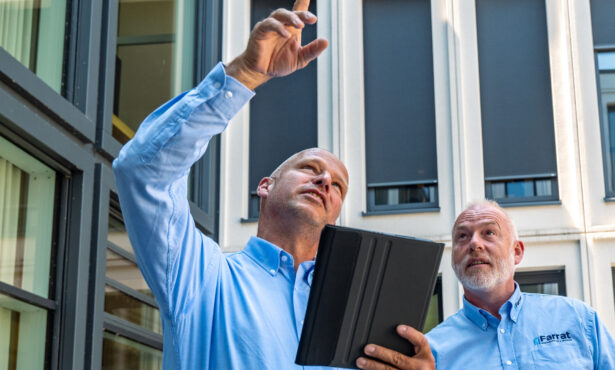There is growing awareness across the UK and Europe on the number of abandoned buildings currently empty when there is such a high demand for residential properties. In the UK more than 700,000 homes lay vacant, with 1.8 million in Germany, 2 million in both France and Italy, and 3.4 million in Spain. With some businesses downsizing their offices as post-pandemic attitudes to work cause a shift to hybrid and home working, there is potential to repurpose this disused space to tackle the home shortage across the continent as high rises and offices in the world’s capitals sit empty.
In order to do this successfully older buildings will need – at a minimum – to be brought up to standard when it comes to energy efficiency and insulation. However, as concern about both energy bills and climate change grows, developers should be looking to go beyond the standard to ensure that homes are affordable to live in and limit impact on the environment.
Understanding the actual performance of existing buildings is key to being able to design retrofit solutions and optimise the use of materials in the new build. One method of understanding performance levels in real time is using thermography
Thermal Imaging
Thermal imaging can be used when looking to develop existing buildings, to see where heat is ‘escaping’ and so where thermal insulation should be retrofitted with insulating materials. This might include well-known standard forms of insulation such as cavity wall insulation or loft insulation, but also other key areas where additions are being made to the building such as new external envelopes or exiting features and listed facades being retained and supported by new internal structures. This is also the case for new features such as balconies or plants requiring structural penetrations through to the main building frame
Using thermal imaging technology to measure how the building is performing in terms of insulation now, takes the guess work out of thermal modelling – predicting how it will perform in terms on insulation in the future without any additional insulation or with the insulation planned.
Why is retrofitting so important?
The government in the UK has been widely criticised for lack of action in retrofitting existing buildings with insulation, with a focus on energy efficiency for new buildings.
However, building designers and investors are seeing that in order to repurpose or develop these buildings into ones that people want to buy or rent, they need to be affordable to live in. Energy prices are one of the people’s leading concerns for both now and the future.
A survey conducted by YouGov in the Czech Republic, Germany, Italy, and Spain found extensive public support for new regulations to increase energy savings in homes, stating they wanted to buy and rent energy-efficient homes. A quarter of UK households are looking at improving the efficiency of their homes in response to the surging cost of energy bills. Energy efficiency is of genuine importance, especially across the EU.
Summary
Developing abandoned buildings and repurposing buildings no longer in demand is a sound environmentally friendly measure when creating new domestic and commercial properties by using brownfield sites and reusing existing structures and materials.
However, it is only by using technology such as thermal imaging to measure energy efficiency and understand what’s really going on under the skin of these homes and commercial buildings that will maximise their positive impact on reducing energy usage and minimising their carbon footprint.
On a mission to ensure energy efficiency in building developments
Whether you’re redeveloping or repurposing existing buildings, Farrat Structural Thermal Breaks are an essential component for any energy-efficient building. For more information on integrating thermal break solutions into structural connections, visit our Structural Thermal Break hub or one of our dedicated portals.
#onamission








